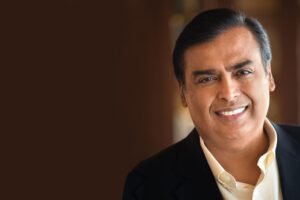I want to provide an overview of Mahinda Rajapaksa net worth, biography, career, and relationship status as of 2023. Mahinda Rajapaksa, a name that resonates with power and controversy, has left an indelible mark on Sri Lankan politics. With his charismatic demeanor and iron-fisted leadership style, Rajapaksa became the country’s sixth President in 2005.
However, behind the political facade lies a man whose life is shrouded in mystery and intrigue. From his humble beginnings as a lawyer to amassing immense wealth, this article delves into the enigmatic journey of Mahinda Rajapaksa – his net worth, biography, age, career achievements, and even his relationships.
Brace yourselves for an eye-opening exploration into the life of one of South Asia’s most polarizing figures. Born on November 18, 1945, in the southern coastal town of Hambantota, Mahinda Rajapaksa was raised in a modest household. His father, D.A. Rajapaksa, was a prominent political figure who served as a Member of Parliament and held various government positions. Growing up in this politically charged environment undoubtedly shaped young Mahinda’s aspirations.
Who is Mahinda Rajapaksa?
Mahinda Rajapaksa, a prominent figure in Sri Lankan politics, has consistently made headlines throughout his career. Born on November 18, 1945, in Hambantota, he served as the President of Sri Lanka from 2005 to 2015. Known for his strong leadership style and nationalist agenda, Rajapaksa played a crucial role in ending the country’s long-standing civil war against the Liberation Tigers of Tamil Eelam (LTTE).
However, his presidency was not without controversy. Criticism surrounding his human rights record and allegations of corruption have sparked intense debates among his supporters and detractors.
Rajapaksa comes from a political family with deep roots in Sri Lankan history. His father, Don David Rajapaksa, was an influential member of parliament and held several ministerial positions. This familial background undoubtedly played a significant role in shaping Mahinda’s political ambitions and fueling his drive to contribute to the development of Sri Lanka.
Beyond politics, there is a fascinating personal side to Rajapaksa. He is known for being an avid lover of nature and a wildlife conservationist. His passion for preserving Sri Lanka’s unique biodiversity led him to establish national parks and protected areas during his tenure as President.
Overall, Mahinda Rajapaksa is a complex and controversial figure who has left an indelible mark on the political landscape of Sri Lanka and its environment.
Early Life and Career:
Mahinda Rajapaksa, the former President of Sri Lanka, was born on November 18, 1945, in Weeraketiya. Growing up in a political family, he was deeply influenced by his father’s involvement in local politics. This early exposure to politics and leadership shaped Rajapaksa’s career aspirations from a young age.
After completing his secondary education at Richmond College in Galle, Rajapaksa pursued higher studies at the Law Faculty of the University of Colombo. During this time, he became increasingly involved in student politics and made a name for himself as a charismatic leader with strong nationalist beliefs. After graduating with honors, Rajapaksa embarked on an impressive legal career before venturing into national politics.
Despite facing numerous challenges, including imprisonment during political repression under Prime Minister Sirima Bandaranaike’s government in 1971-72, Rajapaksa persevered and built a strong foundation for his political future. His early life experiences gave him invaluable insights and instilled the determination to excel later.
Overall, Mahinda Rajapaksa’s early life set the stage for his illustrious career as one of Sri Lanka’s most prominent politicians. His journey is remarkable, from humble beginnings to becoming President of Sri Lanka twice (2005-2015).
Read also: Chamath Palihapitiya Net Worth
Rise to Power:
Mahinda Rajapaksa’s rise to power can be described as nothing short of extraordinary. Born into a humble family in the rural town of Hambantota, he faced numerous challenges and setbacks early on in his career. However, through sheer determination and resilience, Rajapaksa climbed the political ladder with unwavering conviction.
One key factor contributing to Rajapaksa’s rise was his ability to connect with the masses. He recognized the importance of grassroots politics and made it a point to engage directly with people from all walks of life. His charisma and charm won hearts, significantly increasing support for him and his party. This connection with the people proved instrumental in propelling him towards power.
Furthermore, Rajapaksa’s astute understanding of Sri Lanka’s political landscape was crucial to his ascent. He strategically aligned himself with influential figures within his party, forming alliances that helped solidify his position as a dominant force in Sri Lankan politics.
With each successful move, he garnered even more support and slowly but steadily worked towards becoming one of the most influential figures in the country.
Overall, Mahinda Rajapaksa’s rise to power is a testament to his unwavering determination, charismatic personality, and keen political instincts. From humble beginnings to occupying some of the highest positions in government, he exemplifies what can be achieved through hard work and perseverance.
Political Career: Highlights of Rajapaksa’s Political Journey and Achievements
During his political career, Mahinda Rajapaksa achieved several noteworthy milestones. Perhaps one of their most significant achievements was his role in ending the 26-year-long civil war in Sri Lanka.
As President from 2005 to 2015, he implemented a military strategy that successfully defeated the separatist rebels, ending the conflict and restoring peace to the nation. This accomplishment earned him widespread popularity among his supporters and solidified his legacy as a strong and decisive leader.
Another highlight of Rajapaksa’s political journey was his focus on infrastructure development. Under his leadership, Sri Lanka witnessed a surge in construction projects, including highways, ports, airports, and power plants.
These endeavors were crucial for boosting the economy and attracting foreign investments. In particular, the construction of the Hambantota Port and Mattala Rajapaksa International Airport symbolized Rajapaksa’s vision for transforming Sri Lanka into an economic hub in South Asia.
Overall, Mahinda Rajapaksa’s political career has been marked by pivotal accomplishments that have shaped Sri Lanka’s internal dynamics and its standing on the international stage. The end of the civil war and emphasis on infrastructure development have solidified his reputation as a leader committed to national progress and prosperity.
Despite controversies surrounding some aspects of his tenure, it is undeniable that Rajapaksa has left an indelible mark on Sri Lankan politics through these notable achievements.
Relationship and Family Life:
Relationships and family life are the cornerstones of personal happiness and fulfillment. In today’s fast-paced world, finding a balance between work and family commitments is essential. Despite his busy political career, Mahinda Rajapaksa has maintained a strong bond with his wife and children.
A successful relationship requires effort from both partners. Mahinda Rajapaksa’s marriage is a testament to this fact; despite the challenges of being in public, he shows unwavering support for his wife in her pursuits. This mutual respect and understanding contribute to their strong foundation as a couple.
Family life can be complicated, especially when juggling career and parenting responsibilities. However, Mahinda Rajapaksa understands the importance of spending quality time with his children. By prioritizing family events and being actively involved in their lives, he has created lasting memories and fostered strong relationships within his immediate circle.
In conclusion, maintaining healthy relationships and nurturing happy family life is an ongoing process that requires dedication from all parties involved. Mahinda Rajapaksa exemplifies how one can successfully navigate these complexities while pursuing a distinguished career.
Read also: Anne Heche’s Net Worth
Net Worth and Assets: Mahinda Rajapaksa’s Net Worth in 2023
Net worth and assets are always fascinating for public figures, and Mahinda Rajapaksa is no exception. As a prominent political figure in Sri Lanka, his net worth is expected to be quite substantial. While there is no official statement on his exact net worth, various estimates put it in the range of millions of dollars, thanks to his long political career.
However, it’s important to note that measuring someone’s net worth isn’t just about their financial assets; it also considers their political influence and connections. Rajapaksa’s extensive network within Sri Lankan society and beyond has often been cited as a significant factor contributing to his wealth. This highlights the complex nature of calculating the actual value of a public figure like Rajapaksa.
Another aspect that plays into Rajapaksa’s net worth is his involvement in business ventures outside politics. Over the years, he has been associated with various companies and projects, leading some analysts to believe these investments have contributed significantly to his overall wealth.
However, separating personal wealth from political interests can sometimes be tricky when assessing an individual’s net worth.
In conclusion, while Mahinda Rajapaksa’s precise net worth remains somewhat elusive, there is no denying that he possesses considerable assets and financial influence. His decades-long career in politics and business ventures has undoubtedly contributed to his stature as one of Sri Lanka’s wealthiest individuals.
Conclusion: Mahinda Rajapaksa’s legacy and impact
In conclusion, Mahinda Rajapaksa’s legacy and impact on Sri Lanka cannot be understated. During his tenure as President, he implemented various economic policies that drove rapid development in the country.
His infrastructural projects, such as the Hambantota Port and Mattala Airport, were ambitious ventures that aimed to position Sri Lanka as a major player in global trade. While these initiatives faced criticism for their high costs and potential environmental impacts, they undeniably helped raise Sri Lanka’s international profile.
Rajapaksa also played a crucial role in ending the 26-year-long civil war with the Tamil Tigers rebels. Under his leadership, government forces successfully defeated the Tamil Tigers in 2009, bringing an end to one of Asia’s longest-running conflicts.
While there are lingering concerns about human rights violations during this period, particularly towards Tamils and other minority groups, many supporters credit Rajapaksa with reestablishing stability and unity within the country.
Overall, Mahinda Rajapaksa’s legacy is marked by progress and controversy. While he contributed significantly to Sri Lanka’s development and security during his time in office, it is essential to acknowledge the criticisms surrounding his governance style and alleged human rights abuses. Only time will tell how history judges Rajapaksa’s impact on the nation he served for nearly a decade.
FAQs| Mahinda Rajapaksa net worth 2023
Which prime minister is Mahinda Rajapaksa?
Mahinda Rajapaksa is a prominent Sri Lankan politician who served as the sixth President of Sri Lanka from 2005 to 2015. He is not a prime minister but rather held the position of president, which is the highest executive office in Sri Lanka.
During his presidency, Rajapaksa was known for his strong leadership and played a significant role in ending the long-standing civil war in the country.
Rajapaksa's tenure as president saw various infrastructural developments and economic initiatives aimed at improving the lives of Sri Lankan citizens. However, his presidency was also marred by allegations of human rights abuses and authoritarianism. Despite this, he remains a popular figure in Sri Lankan politics and has continued to play an influential role as a member of parliament and leader of the opposition party.
Where is Rajapakse?
Rajapakse, also known as Mahinda Rajapaksa, is a prominent Sri Lankan politician. As of my knowledge in 2021, he is currently serving as the Prime Minister of Sri Lanka. Rajapakse has had a long and influential political career in Sri Lanka, having previously served as the President of the country from 2005 to 2015.
During his presidency, Rajapakse played a significant role in ending the decades-long civil war in Sri Lanka against the Liberation Tigers of Tamil Eelam (LTTE). His leadership during this time garnered both praise and criticism from various quarters. After losing his bid for re-election as president in 2015, Rajapakse remained active in politics and eventually became the Prime Minister under President Gotabaya Rajapaksa in 2019.
It's important to note that political positions can change over time, so it's always recommended to refer to reliable sources for the most up-to-date information on any individual's current whereabouts or roles.
Is Sri Lanka a Buddhist country?
Yes, Sri Lanka is often referred to as a Buddhist country due to the majority of its population practicing Buddhism. Buddhism has a long history in Sri Lanka and has played a significant role in shaping the country's culture, traditions, and values. It is estimated that around 70% of Sri Lankans identify themselves as Buddhists.
Buddhism was introduced to Sri Lanka in the 3rd century BCE and has since become deeply ingrained in the fabric of society. The country is home to many ancient Buddhist temples, stupas, and monasteries that attract both locals and tourists alike. The teachings of Buddha continue to influence various aspects of everyday life in Sri Lanka, including religious ceremonies, rituals, and ethical practices.
However, it is important to note that while Buddhism holds a prominent position in Sri Lankan society, the country also respects and protects the rights of other religions. Freedom of religion is enshrined in the constitution, allowing individuals to practice their own faiths without discrimination. Thus, while Sri Lanka may be predominantly Buddhist, it remains a diverse nation with people from different religious backgrounds coexisting harmoniously.
Is Mahinda Rajapaksa Hindu?
No, Mahinda Rajapaksa is not Hindu. He is a Buddhist. Rajapaksa was born into a devout Buddhist family and has remained a practicing Buddhist throughout his life. Buddhism is the predominant religion in Sri Lanka, where Rajapaksa served as the President from 2005 to 2015. His religious beliefs have influenced his policies and governance, as he has worked towards promoting Buddhist values and protecting the interests of the Buddhist community in Sri Lanka.
It's important to note that while Rajapaksa may have close ties with Hindu communities in Sri Lanka and has advocated for interfaith harmony, his personal religious affiliation remains Buddhist. This distinction is crucial when understanding his cultural background and the impact it has had on his political career.
What happened to Mahinda Rajapaksa?
Mahinda Rajapaksa is a Sri Lankan politician who served as the President of Sri Lanka from 2005 to 2015. After his defeat in the presidential election in January 2015, he continued to remain active in politics and was elected as a Member of Parliament. In November 2019, he made a comeback by winning the presidential election and becoming the Prime Minister of Sri Lanka.
During his tenure as president, Rajapaksa's government faced criticism for alleged human rights abuses during the final stages of the civil war against the Tamil Tigers. However, he also gained popularity among many Sri Lankans for his strong stance against terrorism and infrastructure development projects.
Since returning to power as Prime Minister, Rajapaksa has focused on economic reforms and strengthening ties with other countries. He has implemented policies aimed at boosting investment and creating job opportunities. Additionally, his government has prioritized national security and counterterrorism efforts.
Overall, Mahinda Rajapaksa's political career has been marked by both controversy and achievements. His return to power in recent years reflects his enduring influence in Sri Lankan politics.
When did Mahinda Thero come to Sri Lanka?
Mahinda Thero, also known as Mahinda Maha Thera, is a significant figure in Sri Lankan history. He was an Indian Buddhist monk who is believed to have arrived in Sri Lanka during the 3rd century BCE. According to historical records and religious texts, Mahinda Thero came to Sri Lanka from India with the mission of spreading Buddhism on the island.
It is said that Mahinda Thero's arrival in Sri Lanka took place during the reign of King Devanampiya Tissa. This event marks a pivotal moment in Sri Lankan history as it led to the conversion of the king and subsequently, the establishment of Buddhism as the state religion. The influence of Mahinda Thero's teachings and his efforts in propagating Buddhism played a crucial role in shaping the cultural and religious landscape of Sri Lanka for centuries to come.
Mahinda V of Sri Lanka was defeated by the Chola Empire, which was a powerful South Indian dynasty. The Cholas invaded Sri Lanka during the 10th century and successfully overthrew Mahinda V, establishing their control over the island for several decades.
The Chola Empire, under the leadership of Rajaraja I and his son Rajendra Chola, had a formidable naval force that allowed them to expand their influence across the Indian Ocean region. They launched several military expeditions into Sri Lanka, aiming to assert their dominance and control over trade routes.
During one such campaign in 993 CE, Rajaraja I's forces defeated Mahinda V and took control of Anuradhapura, the capital city of Sri Lanka at that time. This marked the end of Mahinda V's reign and the beginning of Chola's rule in Sri Lanka.
Who defeated Mahinda 5 of Sri Lanka?
Mahinda V of Sri Lanka was defeated by King Vijayabahu I in the 11th century. Mahinda V, also known as Magha, was an invader from Kalinga (present-day Odisha, India) who captured the capital city of Polonnaruwa and established his rule over Sri Lanka. However, his reign was marked by tyranny and oppression, leading to widespread discontent among the people.
In response to this oppressive rule, a rebellion led by King Vijayabahu I emerged in the late 11th century. Vijayabahu I successfully rallied local forces and gained support from regional kingdoms to challenge Mahinda V's authority. After several years of conflict, Vijayabahu I managed to defeat Mahinda V and restore stability to Sri Lanka. This victory marked the end of Mahinda V's rule and paved the way for a new era under Vijayabahu I's leadership.
What is the religion of Mahinda?
Mahinda is not associated with any specific religion. In fact, Mahinda is a personal name and does not inherently imply any religious affiliation. The religion of an individual named Mahinda would depend on their personal beliefs and practices. It is important to note that individuals have the freedom to choose their own religious beliefs, and it cannot be assumed based solely on their name.


















+ There are no comments
Add yours